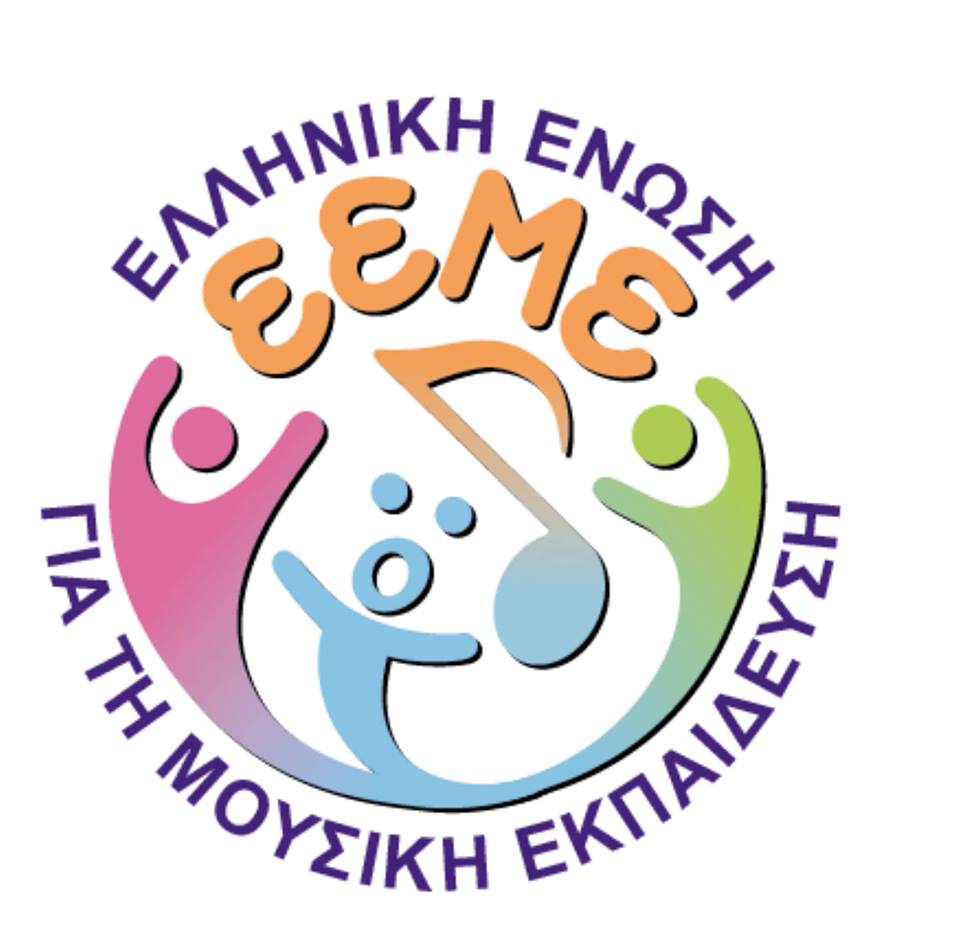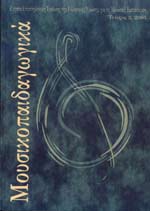1) Androutsos Polyvios: Research and Educational Practice: Dialogue or gap?
2) Kitsiou Chrisa: "Examination of Music Acoustic Ability". Analysis and axiological approach of similar systematic procedure
3) Koniari Dimitra: Absolute Pitch: A brief review of the literature.
4) Vamvoukli Mariza: Dyslexic children & teaching of music: Recognizing and overcoming the difficulties.
5) Papanikolaou Evi: Guided Imagery and Music (GIM) as a form of therapy for children and adolescents.
Abstracts
1) Polyvios Androutsos
Research and Educational Practice: Dialogue or gap?
This paper explores the relationship between music education research and educational practice. As it is evident in the relevant literature there is a gap between research and educational practice. The speculation in which the international music education community is engaged is presented and the causes of the problem are examined. Following this, successful examples of efforts to bridge the gap are presented, and ways to achieve a fruitful and efficient dialogue are explored. Towards this direction proposals are given that are based in successful practices of collaboration between researchers and teachers. Finally some suggestions are given to avoid this problem in the Greek music education reality.
2) Chrisa Kitsiou
"Examination of Music Acoustic Ability". Analysis and axiological approach of similar systematic procedure
This study aimed at investigating the new way to examine Dictee at Panhellenic Exams. Specifically, it deals with the structure, content and application of the test. For this reason, two tests were created, similar to the ones of the Panhellenic Exams of 2003 and 2004. A total of 178 senior and alumnus students took these tests. The two created tests are representative of the original ones. There were also questionaries created that were filled by first year students of Greek Music Universities who were examined with the new way "Examination of Music Acoustic Ability". From the theoretical approach of the test, the conclusions from the descriptive and statistic analysis, of the data of tests, the remarks of the questionaries and the problems that took place at the time of Panhellenic Exams, it seems that there are many things to be reconsidered so that the reliability of the test will increase on following exams of next years.
3) Dimitra Koniari
Absolute Pitch: A brief review of the literature
Absolute pitch (AP) is the ability to identify a tone's pitch or to produce a tone at a particular pitch without the use of an external reference pitch. AP exists in varying degrees among musicians generally described as AP possessors. Although the aetiology of AP is not yet completely understood, evidence points toward the early-learning theory. This theory states that AP can be learned by anyone during a limited period early in development, up to about age 9, after which a general developmental shift from perceiving individual features to perceiving relations among features makes AP difficult or impossible to acquire. The paper discusses the above findings and highlights the importance of the role of the specialised music educator in early childhood music classrooms.
4) Mariza Vamvoukli
Dyslexic children & teaching of music: Recognising and Overcoming the Difficulties
This article focuses on the teaching of music to dyslexic children, the nature of their difficulties and the strong need for special care to be taken. This consists in a redefinion of the priorities in music education, reconsideration of the role of musical notation (in the sense that its high importance is not an undoubted fact) and recognition of the need for a special approach: multi-sensory, systematic, proceeding step by step and giving precedence to doing and experience first and theory and symbols afterwards. Specific suggestions are made for aspects/fields of music that can be practiced and improved, such as the sense of rhythm, of pitch, of harmony and tonic centres and the understanding of the structure of musical pieces. Kodaly method is briefly mentioned as a particularly suitable one and, lastly, it is stressed that dyslexic pupils need extra encouragement compared with the rest of the pupils, as their self-esteem is normally a low one due to the difficulties they face in everyday life. Music is suggested as an involvement, if not always able to be the decisive solution but certainly as a steady source of enjoyment and creation.
5) Evi Papanikolaou
Guided Imagery and Music (GIM) as a form of therapy for children and adolescents
Guided Imagery and Music (GIM) is a form of music-assisted psychotherapy that has been used in various settings, with diverse populations and for a variety of therapeutic, educational and developmental purposes. Central to this method are a preliminary conversation, a relaxation and induction, a music-imaging experience, a return to an alert state, and a closing conversation on the symbolic meaning or processing of the images created during the music listening part of the session. In the individual form, the "traveller" maintains an ongoing dialogue with the guide while imaging to the music, whereas in the traditional group form, the travellers engage in dialogue, after the music-listening session. While GIM is used mainly with adults, it may also be used quite effectively with children and adolescents, although goals and method may differ. The purpose of this paper is to demonstrate how GIM has been used with this particular population, starting with the original model and then examining further adapted modifications of it. This will be accomplished by reviewing a collection of studies using GIM with children and adolescents, in various settings such as schools, special education units, and medical and psychiatric in-patient units. All of the studies describe practical applications of GIM with this population although few of them have attempted research applications for GIM with children and adolescents. The purpose of this paper is also to discuss some implications for future development of the GIM psychotherapy method, aimed at achieving a higher effectiveness while working within this particular client group.






 Please wait...
Please wait...